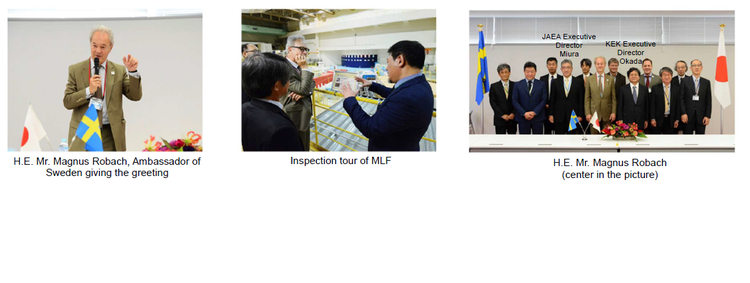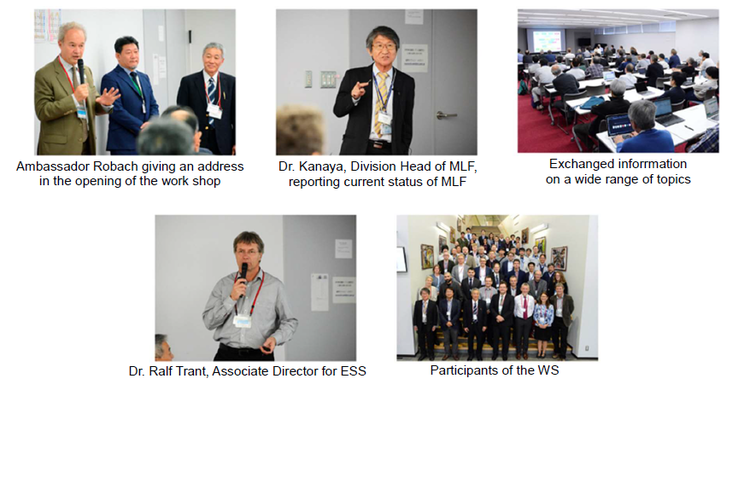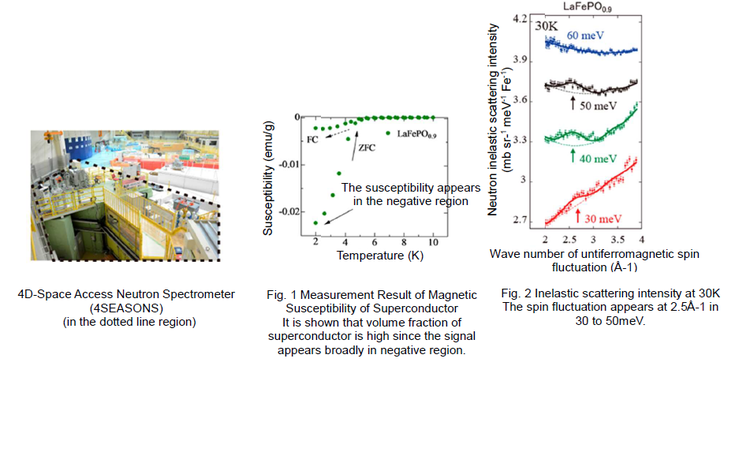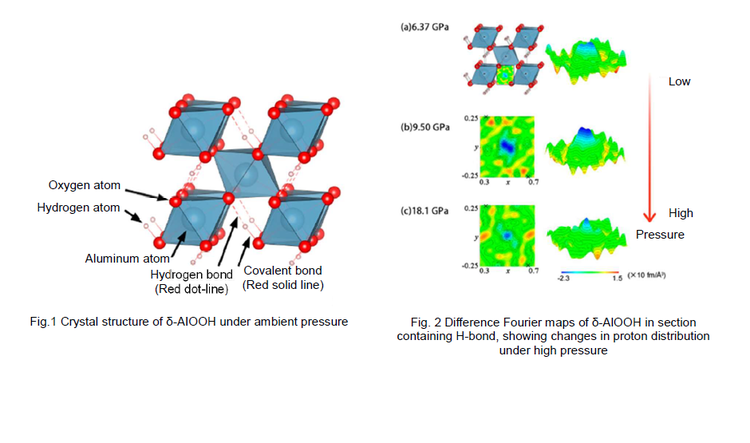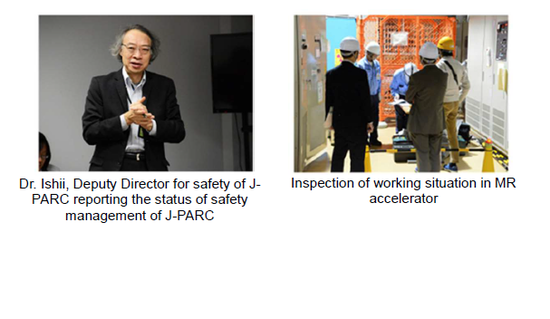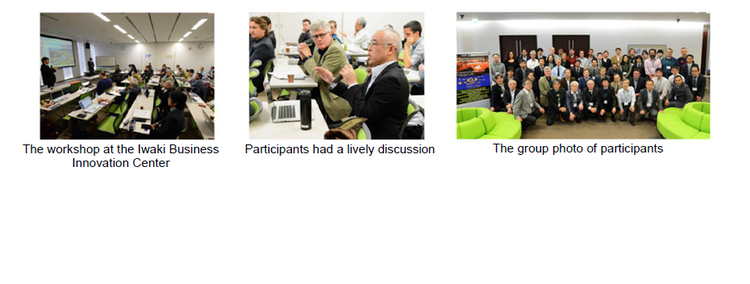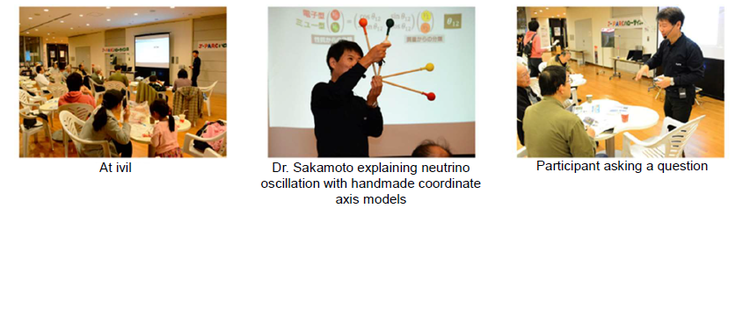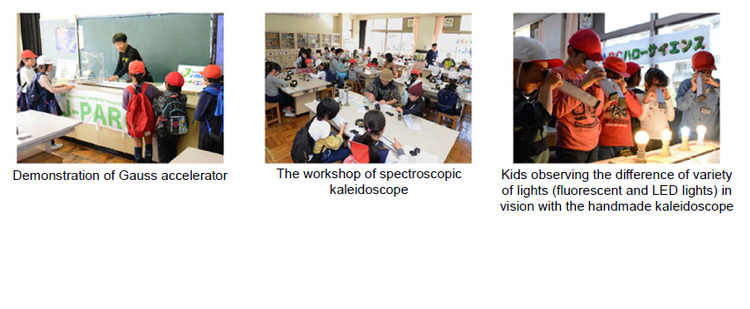J-PARC NEWS November 2018 (Issue #163)
■His Excellency Magnus Robach, Swedish Ambassador to Japan, Visits J-PARC (November 13, J-PARC)
The J-PARC Center is actively engaged in technology and research cooperation with a neutron experimental facility (the European Spallation Source, or ESS), currently under construction in the city of Lund, Sweden, as one of our collaborative efforts with overseas research institutions. Like the Materials and Life Science Experimental Facility (MLF) at J-PARC, the ESS will be an experimental facility for investigating the structure and behavior of matter using pulsed neutron beams produced via a high-intensity proton beam. This research collaboration with J-PARC will be a symbol of the close cooperative relationship between our two countries. His Excellency Magnus Robach, the Swedish Ambassador to Japan, recently visited the J-PARC Center to coincide with an ESS Workshop based on this collaboration, held from November 13. On the day of his visit, there was a welcome address from JAEA Executive Director Dr. Yukitoshi Miura and KEK Executive Director Dr. Yasuhiro Okada. After that, the ambassador was given an overview of J-PARC by Dr. Naohito Saito, Director of the J-PARC Center, and he toured the MLF and Neutrino Experimental Facility. The ambassador has high expectations that development of cooperation between the two institutions will help contribute to the future of both countries and humankind.
■Held 3rd ESS-J-PARC Workshop (November 13 -15, J-PARC)
On November 13-15, the 3rd ESS-J-PARC Workshop was held at the J-PARC Research Building and the MLF Experimental Building with the participation of 24 researchers from ESS. The plenary meeting to start the first day began with a message from Ambassador Robach, and this was followed by break-out sessions in each field continuing through the second day. At these sessions, there was detailed exchange of information on a wide range of topics, including accelerators, safety, radiation monitoring, neutron targets, handling of radioactive material, and deuteration of experimental samples. There were also discussions to clarify specific areas of cooperation. In the summary on the third day, there were reports from each session, and at the end, small groups toured the MLF's various instruments, the neutron target facility, the accelerator facility, and other points of interest.
■World's First Discovery of High-Energy Magnetic Fluctuations in Iron-Phosphate Superconductors --Elucidating the Mechanism of Iron-Based Superconductors and Searching for New Superconductors-- (November 5, Press Release)
The antiferromagnetic fluctuations thought to be key to the manifestation of superconductivity have previously not been found in the iron-phosphate superconductor LaFePO1-y. In this research, a team led by Dr. Motoyuki Ishikado of the Comprehensive Research Organization for Science and Society (CROSS), Dr. Shin-ichi Shamoto of the JAEA's Advanced Science Research Center, and Dr. Ryoichi Kajimoto of the J-PARC Center showed for the first time in the world that antiferromagnetic fluctuations are present at a higher energy (30-50 meV) than expected based on Tc (approx. 2.5 meV). This was achieved through inelastic neutron scattering experiments* employing samples of LaFePO0.9 with a superconducting transition temperature Tc of 5K. The relationship between antiferromagnetic fluctuations and superconductivity is expected to be a clue in the search for new superconductors. These research findings were featured in the November 5 online edition of the British scientific journal Scientific Reports.
*The experimental instruments were: 1) The 4D-Space Access Neutron Spectrometer (4SEASONS) of BL01 at the Materials and Life Science Experimental Facility (MLF), 2) CTAX at the Oak Ridge National Laboratory (USA), and 3) IN5 at the Institut Laue-Langevin (France). These results were obtained with 4SEASONS through analysis of magnetic fluctuations at high energy.
■Successful Direct Observation of Symmetrization of Hydrogen Bond under High Pressure --Elucidating the Causes of Physical Changes in Hydrous Minerals in the Deep Earth-- (November 22, Press Release)
In joint research with a research team including Professor Kazuki Komatsu of The University of Tokyo and the Oak Ridge National Laboratory, Dr. Asami Sano of the J-PARC Center conducted an in situ experiment*1 under high pressure on the aluminium hydroxide δ-AlOOH*2 using PLANET*3 at the MLF and SNAP*3 at the Spallation Neutron Source (SNS, in the USA) and directly observed, for the first time, the occurrence of symmetrization, in which hydrogen atoms in water molecules are positioned at the center between two adjacent oxygen atoms, at a pressure of 180,000 atmospheres corresponding to an underground depth of 520 km. In this study, the distance between oxygen atoms was compressed under high pressures equivalent to the deep earth, and it was shown that the hydrogen bonds change in nature, becoming stronger, and this causes changes in the properties of the entire mineral, such as a rise in the velocity of elastic waves. These results were featured in the British scientific journal Scientific Reports on October 19, 2018.
*1 Experiment simulating high-pressure conditions with experimental instruments
*2 A high-pressure phase formed when the crystal structure of the hydrous mineral diaspore, contained in substances such as bauxite (the raw material of aluminium) changes to a high-density structure under high temperature and pressure.
*3 PLANET and SNAP are neutron diffractometers for investigating the structure of matter under high pressures.
■Conducted J-PARC Center Safety Audit (November 20-21, J-PARC)
The J-PARC Center Safety Audit for FY2018 was carried out by two audit committee members. At the audit, there was a report on the safety management situation at J-PARC by the Deputy Director in charge of Safety, Dr. Tetsuro Ishii, and afterward each of the people in charge explained matters such as adoption of operational improvements for preventing radiation injuries. On the following day, there was an inspection of the work situation and other factors at the MR Accelerator Facility, and discussion of topics such as the current situation and issues pertaining to accident prevention training like KY/TBM. In the final critique prepared by the audit committee members, there was the important message that "when you have a bad feeling, take a breath, think, and stop yourself," and this helped deepen understanding.
■14th International Workshop on Spallation Materials Technology IWSMT-14 (November 11-16, Iwaki Business Innovation Center)
IWSMT is an international conference held in alternate years, whose main theme is spallation target materials and accelerator-driven transmutation systems. This year, the J-PARC Center was the host organization, and the event was held at the Iwaki Business Innovation Center and other locations from November 11 to 16. About 60 researchers (roughly half of home were non-Japanese) participated from universities, research institutions, and private companies. There were discussions of topics such as proton beam irradiation effects, corrosion and embrittlement due to liquid metals, basic research on radiation damage (DPA, etc.), the latest results in technology development for materials/equipment, service life evaluation of various target systems due to higher intensity of high-energy quantum beams, and physical characteristics of radiated materials left behind in nuclear power plant accidents. Reports were made on topics such as the situation of post-irradiation testing at each institution. There was also a tour of the area adjacent to the Fukushima Daiichi Power Plant.
■22nd J-PARC Hello Science --Special Request Event-- (October 26, Tokai-mura Industry and Information Plaza "iVil")
In this month's J-PARC Hello Science, our science communicator Dr. Shinichi Sakamoto explained three topics previously requested by participants: a review of the standard model of elementary particles, CP symmetry breaking of neutrinos, and observation of gravitational waves. These are all difficult topics, but the participants listened eagerly to explanations mixed with experiments, and peppered Dr. Sakamoto with questions at many points. Starting with this event, Hello Science will be participating in the "Tokai Marugoto Museum" program promoted by Tokai Village in which the entire town is regarded as an open-air museum.
■Held J-PARC Hello Science at the Kigisukko Festival (November 10, Sugaya-Higashi Elementary School, Naka City)
Science communicator Dr. Shinichi Sakamoto and others participated for the first time in the science experiment classroom of the Kigisukko Festival held at Sugaya-Higashi Elementary School in Naka City. In a demonstration of a Gauss accelerator, everyone was surprised by the tremendous speed of a steel ball shot out by the powerful magnetic force of neodymium magnets! After that four sessions were held constructing "kaleidoscopes of light." Children who peeked into the sample kaleidoscope said "It's beautiful! I want to make one too!" In all, a large contingent of almost 200 students participated in the classes, and enjoyed the experiments and craft-work.

